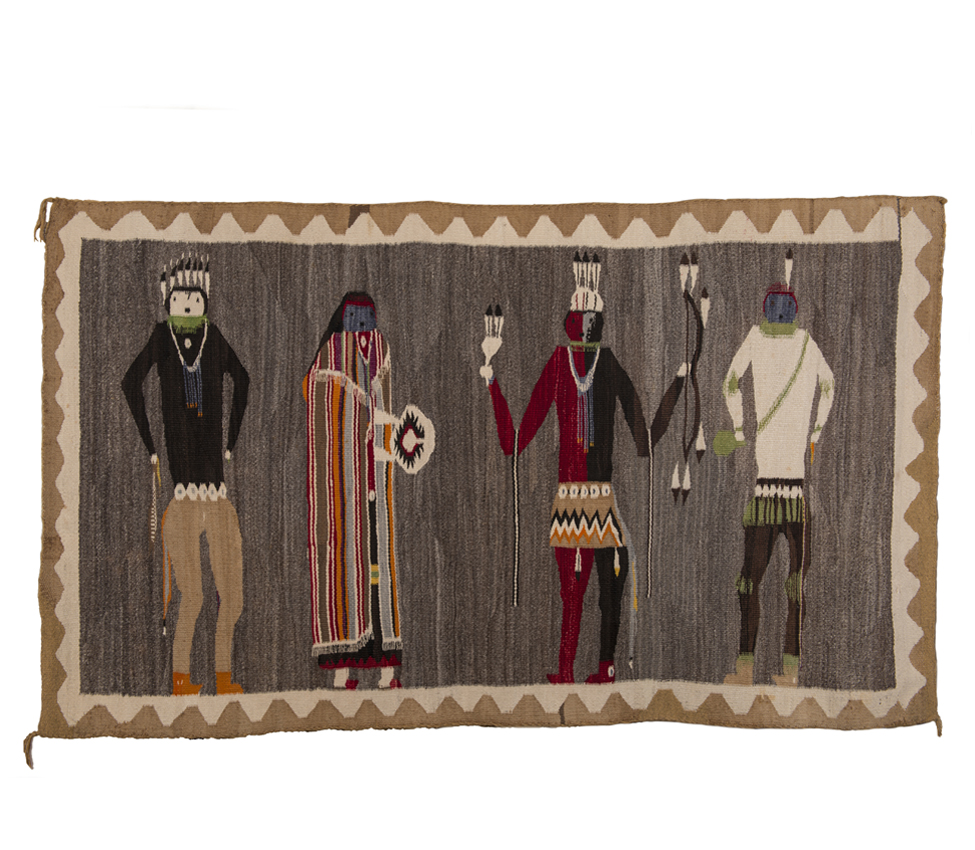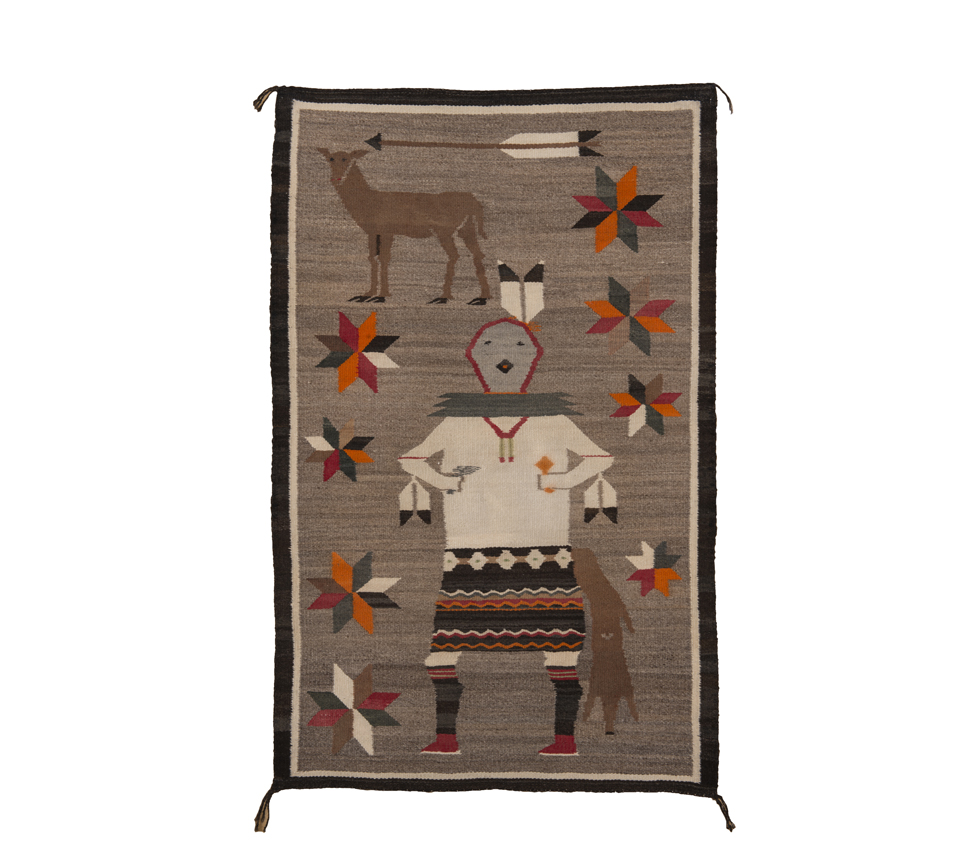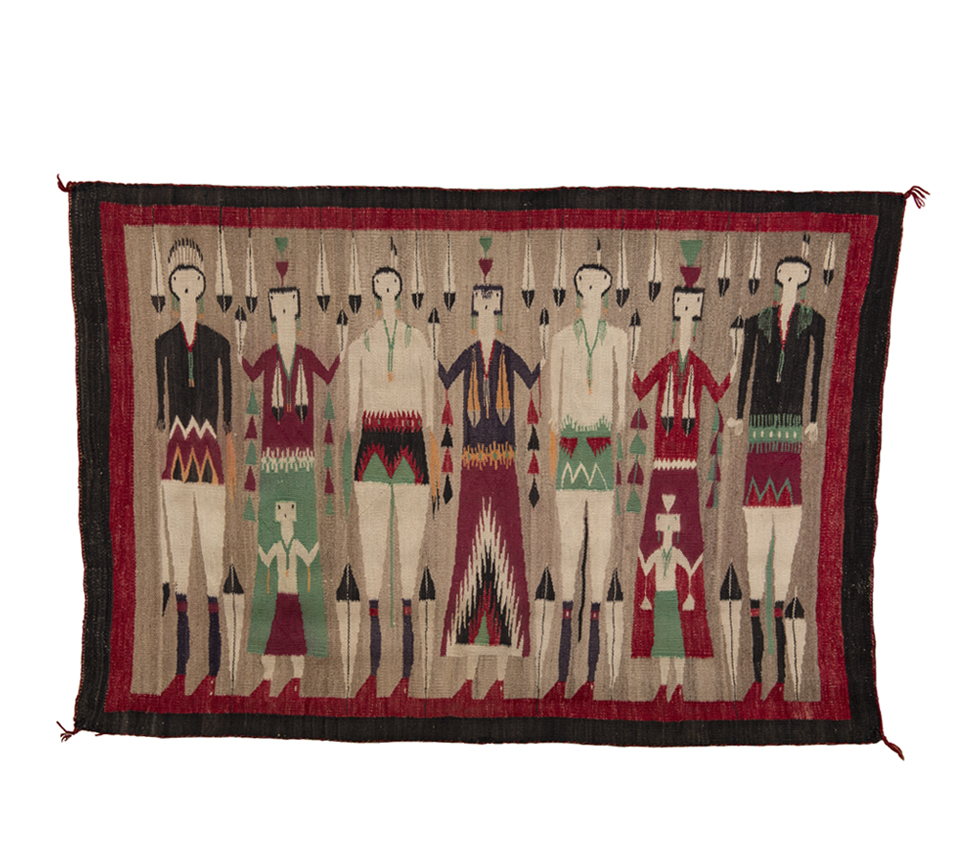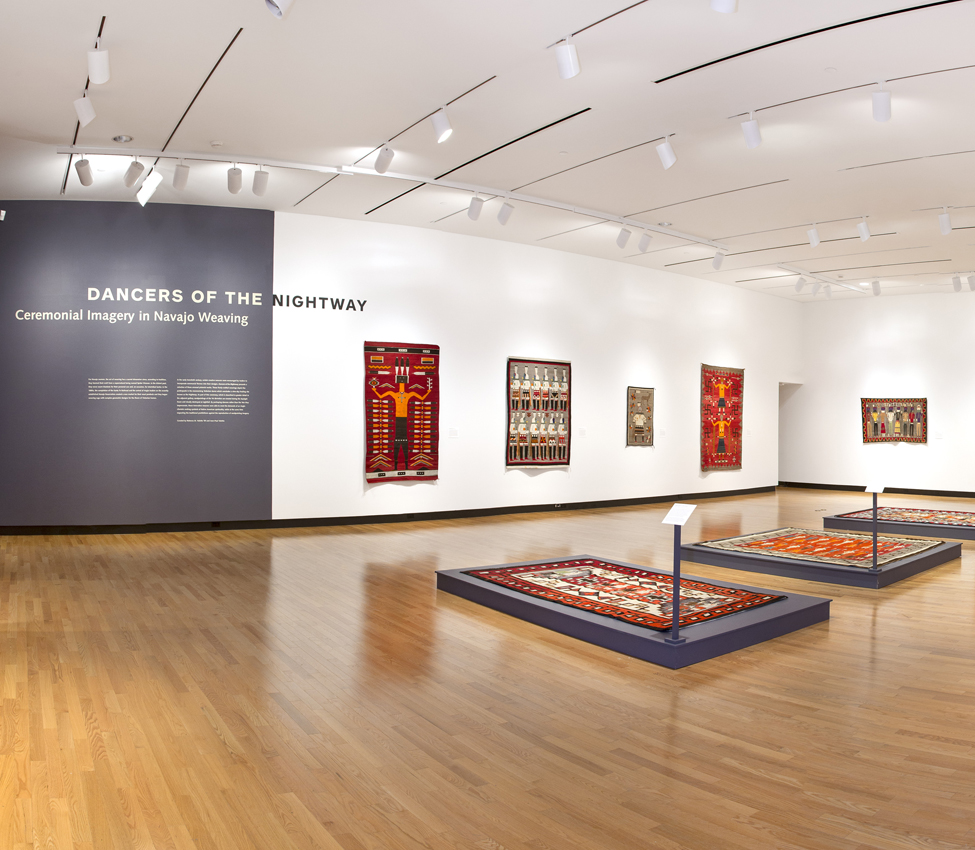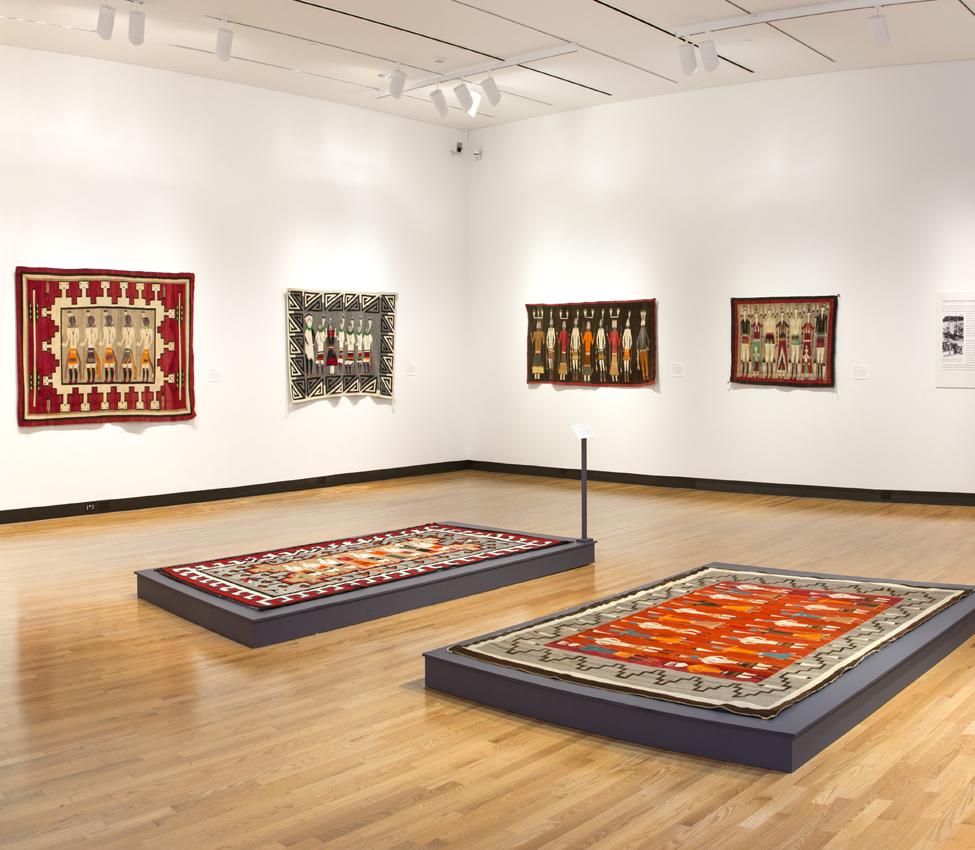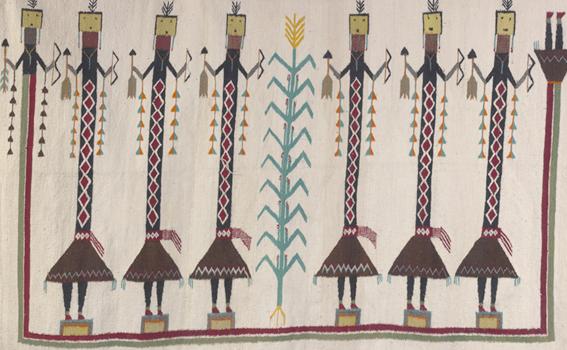Dancers of the Nightway
Ceremonial Imagery in Navajo Weaving
For Navajo women, the act of weaving has a sacred dimension since, according to tradition, they learned their craft from a supernatural being named Spider Woman. In the distant past, they wove warm blankets for their personal use and, on occasion, for intertribal barter. In the 1880s, the completion of the Santa Fe Railroad and the arrival of Anglo traders on the recently established Navajo Reservation created a new market for their wool products and they began weaving rugs with complex geometric designs for the floors of Victorian homes. In the early twentieth century, some creative weavers were encouraged by traders to incorporate ceremonial imagery into their designs. Dancers of the Nightway: Ceremonial Imagery in Navajo Weaving presents a selection of these unusual pictorial works. These finely-crafted wall hangings depict the participants in the mesmerizing Yeibichai dance, the evening conclusion of a nine-day healing rite called the Nightway. Deeply protective of their complex spiritual life, the Navajo, who refer to themselves as Diné, historically held their sacred ceremonies in remote locations and prohibited the reproduction of their curative sandpaintings. By portraying dancers impersonating the Yei divinities rather than the actual Yeis, these innovative weavers were able to meet the demands of an Anglo clientele seeking symbols of Native American spirituality, while at the same time respecting the traditional prohibitions. Their results are lively and imaginative secular interpretations of ceremonial themes.
Curated by Rebecca M. ‘59 and Jean-Paul Valette
This exhibition is made possible by the Susan B. Weatherbie Exhibition Fund.Events And Links
Rebecca M. Valette '59, Professor Emeritus, Boston College
Christine Delucia, Assistant Professor of History
Collection Spotlight
Curated by Lynda Teller Pete, a fifth-generation weaver from the Newcomb and Two Grey Hills areas of the Navajo Nation, this collection spotlight focuses on a ca. 1935-1940 Navajo weaving of Yei figures. As a complement to the concurrent exhibition ...

 Give
Give
